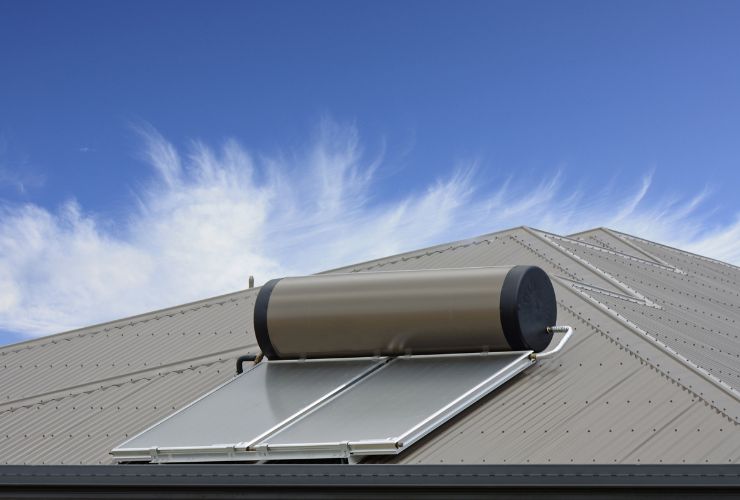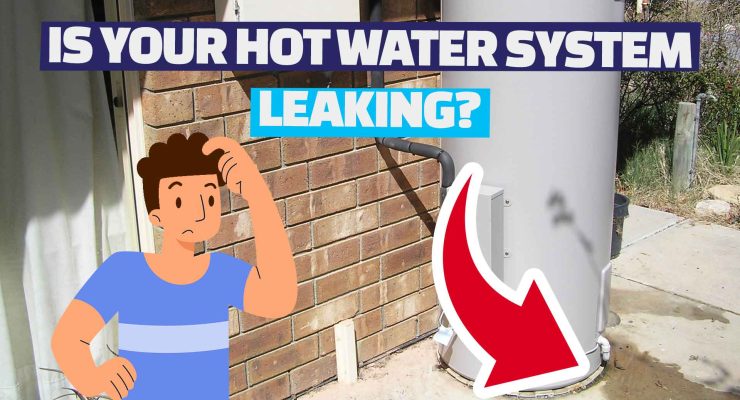
Fast read
Solar thermal systems—also called solar hot water systems—utilise the sun's energy efficiently to warm water for domestic use in a tank. Solar hot water systems can either have a tank on the roof and collectors on the ground or a tank on the side of the house and collectors on the roof.
Both models utilise a pump to transfer water from the collectors to the tank. To deliver hot water on cloudy days or when more hot water is required than the solar system can produce, most solar hot water systems additionally contain an electric booster.
The electric booster won't function during a blackout, which means hot water cannot be accessible until the electricity is back on. However, the sun's energy could heat the hot water storage tank once more on a sunny day.
If I have a solar hot water system, will it work during a blackout?
An older style solar hot water system, also known as a solar thermal system, typically places the hot water tank on your roof, where it absorbs the sun’s rays using a couple of collectors to heat the water.
Imagine your solar thermal system is a bit like having a hose sprawled out in your garden on a scorching day. As a child, you might recall an experience when activating a hose resulted in surprisingly warm water flowing out. This phenomenon occurred because of the transfer of the sun’s heat onto the hose, subsequently raising the water temperature inside.
Similarly, in a solar thermal system, when the sun’s shining bright, it heats the water in those collectors on your roof. But during a blackout, it’s like the hose without the sun—it might not have enough heat stored up to keep the water hot. So, whether you’ll have hot water or not during a blackout depends on how much sun has been warming it up before the power goes out.

Fundamentals of solar hot water
In a solar hot water system, the fundamental principle is quite similar. Envision a system where a network of tubes, usually crafted from aluminium or copper, forms a crisscross pattern within the roof collectors.When sunlight hits these collectors, it heats the water flowing through these tubes.
The magic happens as hot water tends to rise because it’s lighter than cold water. So, within these tubes, the heated water naturally moves upward, eventually reaching the top of the collector. The tank strategically sits atop the collector, gathering and storing the heated water. Typically, these tanks have a capacity of around 180 to 250 litres, serving as a reservoir for the heated water the system produces.
Now, there’s another model of the solar hot water system. Here, the roof hosts water collectors while the tank finds its place on the side of the house.
To bridge the distance between the collectors and the tank, a pump comes into play. This pump aids in the transfer of water from the collectors to the tank, ensuring that the heated water finds its way to storage. These systems often offer tanks with larger capacities, ranging from 250 to 400 litres, providing ample storage for the collected and heated water.
Most systems use electricity via an electric booster
So, if it’s a cloudy day, your solar hot water system will not perform at its optimum, and you will not get the entire tank at a maximum hot temperature. In many cases, these systems include an electric booster that kicks in during cloudy days or when there’s a higher demand for hot water than what the solar system can provide.
That means the booster will start coming on if the temperature in the hot water tank goes below a certain degree. Then, heat your water using normal electricity, usually around 3200 Watts which can be converted to kilowatts.
During a blackout, let’s say you’ve had a long shower and used all the hot water available in the tank, then after that, obviously being a blackout, you don’t have the booster working.
Even if you have a solar hot water system, during a blackout, it can still affect the hot water output.
The following morning, when the sun rises, you will have hot water again if you’ve got a hot day from 10 to 11 a.m. But till your electricity is working again, you are only limited to generating the hot water that the sun will heat for you. For more information and alternate systems, refer to Energy.Gov’s article about solar hot water systems.


